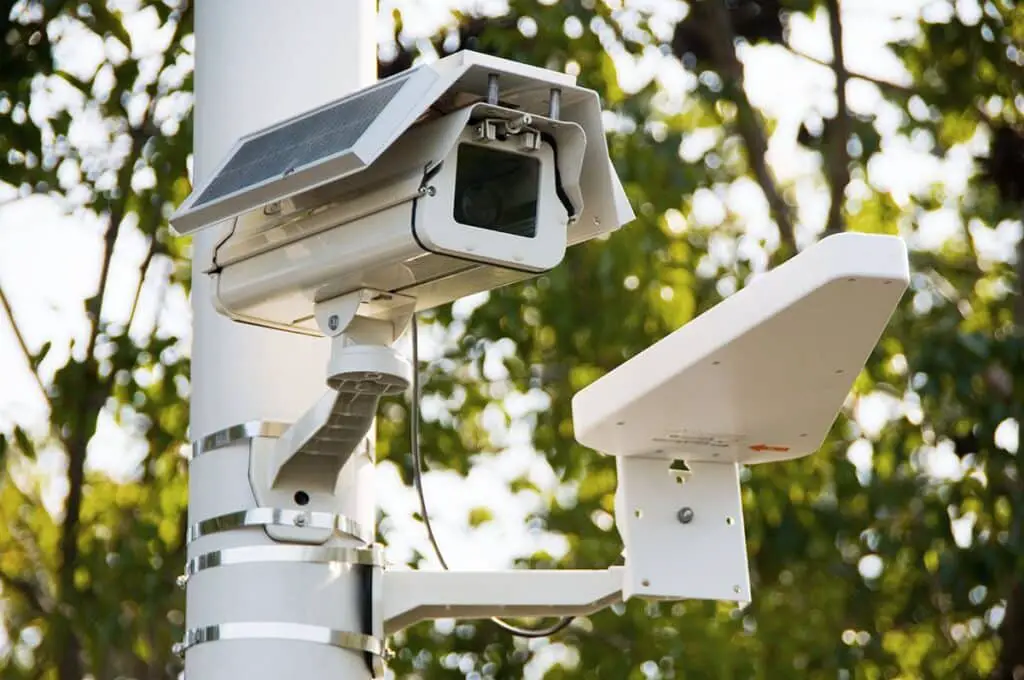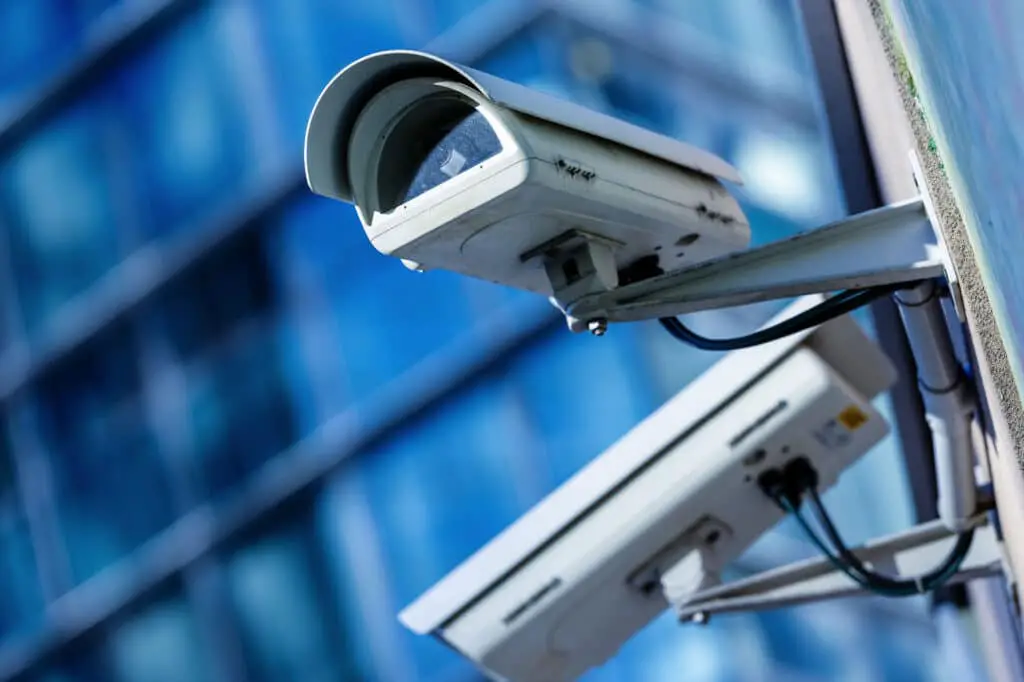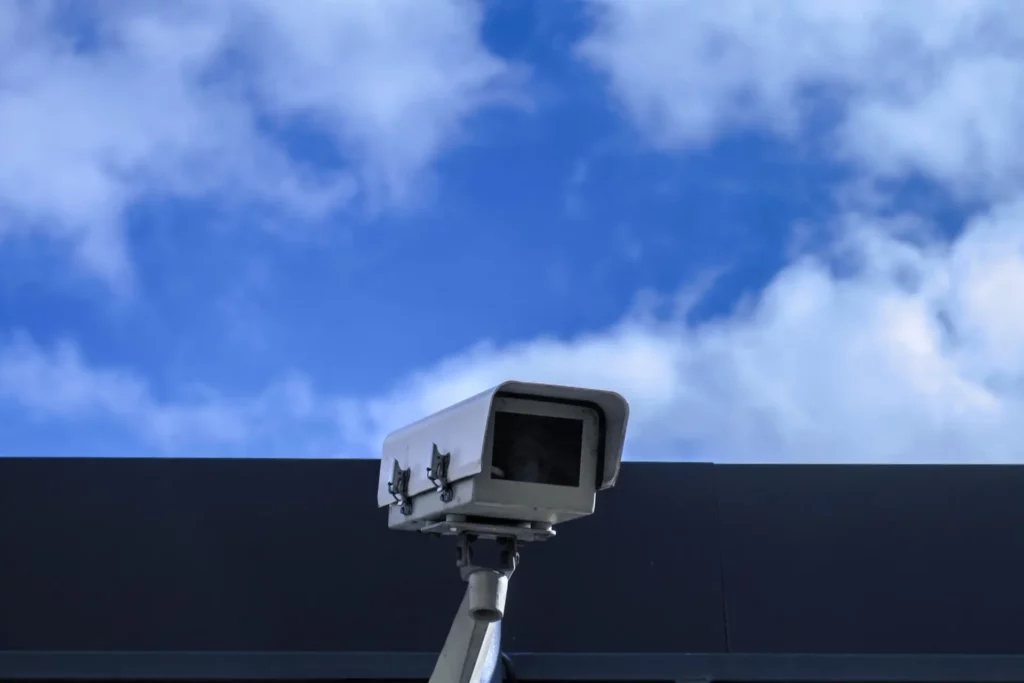Introduction
When Did Surveillance Cameras Start: The advent of surveillance cameras has significantly transformed the way we monitor and secure our surroundings. These unblinking electronic eyes have become ubiquitous in our modern society, serving a range of purposes from crime prevention to traffic management. However, the history of surveillance cameras dates back much further than one might expect.
Ancient civilizations had guards on watchtowers or city walls to watch for dangers. Over time, advancements in technology allowed for the development of more sophisticated surveillance methods. The first semblance of a surveillance camera emerged in the late 19th century with the invention of closed-circuit television (CCTV) systems.
In the early 1940s, German engineer Walter Bruch created closed-circuit television for security, which led to the contemporary surveillance camera. Vintage CCTV systems were big and employed analog technology, limiting their efficacy and reach.

When were surveillance cameras first used?
The military origins of closed-circuit television (CCTV) cameras can be traced back to Soviet Russia during Stalin’s reign. In 1927, Russian scientist Léon Theremin connected a video camera and television to form one of the earliest CCTV systems in history. It was used to watch visitors coming to the Kremlin in Moscow.
The earliest identifiable antecedents of contemporary security cameras appeared in the late 19th century. CCTV systems led to the creation of modern surveillance cameras.
The German engineer Walter Bruch created closed-circuit television for security in 1942. The German military deployed these analog CCTV systems during World War II. However, they were big, costly, and less capable than current security cameras.
The 1960s saw security cameras take off. The technology industry’s expansion and video quality and recording improvements drove security camera usage for diverse uses. Their initial job was to deter and monitor crime in banks, merchants, and government facilities.
Who made the first surveillance camera?
Marie Van Brittan Brown
Marie Van Brittan Brown first pioneered and patented a CCTV home security system, much of the technology of which is still used in home security systems today (U.S. Patent 3,482,037).
Walter Bruch, a German engineer, invented the first surveillance camera. Bruch established security CCTV systems in the early 1940s during World War II.
Bruch was an engineer working for the German company Telefunken. His work on television technology led him to explore the possibilities of using closed-circuit television for monitoring and surveillance. The main objective was to enhance security and prevent unauthorized access to sensitive areas, particularly during wartime.
The German military largely used Bruch’s analog CCTV systems. These devices sent video signals across a closed circuit for real-time surveillance monitoring and recording. Modern security cameras are more advanced than these early cameras, which were large.
Who uses surveillance?
Surveillance is used by citizens for protecting their neighborhoods. And by governments for intelligence gathering – including espionage, prevention of crime, the protection of a process, person, group or object, or the investigation of crime.
diverse organisations and people use surveillance for diverse goals. The usage of surveillance spans industries and sectors:
Law Enforcement Agencies:Police and security organizations employ surveillance extensively to keep the peace, investigate crimes, and obtain evidence. Cameras on streets, transportation hubs, and other public locations can prevent crime and improve investigations.
Businesses: Many organizations use surveillance to protect their assets, personnel, and facilities. Retail businesses, banks, office buildings, warehouses, and manufacturing sites utilize surveillance cameras to discourage theft, monitor staff conduct, and maintain safety.
Transportation Systems: Surveillance is essential for managing transportation systems effectively. Airports, train stations, and bus terminals use surveillance cameras to monitor passenger flow, ensure security, and detect suspicious activities.
Educational Institutions:Schools and colleges use surveillance to protect students and employees. Cameras in hallways, classrooms, and parking lots deter vandalism, monitor behavior, and boost campus security.
Who discovered surveillance?
The First Surveillance System
1942. Fifteen years after Theremin possibly built a system in the Soviet Union, an engineer named Walter Bruch designed what many consider the world’s first surveillance closed-circuit television (CCTV) system.
Society has conducted surveillance for millennia. Monitoring and watching people or groups for information or security has ancient origins. Since surveillance’s beginnings are linked with human communities, it’s hard to pinpoint a single person.
Early humans undoubtedly used surveillance to defend themselves and observe their environment. Ancient civilizations used guards on watchtowers, city walls, and key locations to watch for foes and outsiders.
Monitoring systems improved with civilization. Spies and informants helped Roman and Byzantine civilizations gather information. Strategic information and control were obtained via secret monitoring, espionage, and covert operations.
CCTV systems advanced surveillance throughout contemporary history. In the early 1940s, German engineer Walter Bruch introduced closed-circuit television for security.
What is IP surveillance camera?
An Internet Protocol camera, or IP camera, is a type of digital video camera that receives control data and sends image data via an IP network.
IP surveillance cameras, also known as network cameras, are a type of digital video camera that captures and transmits video footage over an Internet Protocol (IP) network. Unlike traditional analog cameras that require a direct connection to a recording device, IP cameras have built-in networking capabilities, allowing them to connect to an existing local area network (LAN) or the internet.
IP cameras compress video and send it as data packets over an IP network using digital encoding. This allows remote video stream monitoring and access from anyplace with an internet connection. Accessing and controlling video data is easy using software or online applications.
One of the key advantages of IP surveillance cameras is their ability to capture high-resolution video with superior image quality. They offer features such as wide dynamic range, digital zoom, and advanced image processing algorithms, providing clearer and more detailed footage compared to analog cameras.

When did surveillance cameras start being used?
Surveillance cameras, in some form, have been used for centuries, but the advent of modern surveillance cameras began in the mid-20th century. The concept of closed-circuit television (CCTV) systems laid the foundation for the development of surveillance cameras as we know them today.
The first semblance of surveillance cameras emerged in the late 19th century. In 1942, the German engineer Walter Bruch introduced closed-circuit television for security purposes. During World War II, the German military used analog CCTV systems. However, they were bulky, expensive, and had limited capabilities compared to modern surveillance cameras.
In the 1960s, security cameras became commonplace. Technology, especially video quality and recording, drove security camera usage for many uses. They were first employed in banks, retailers, and government buildings to discourage crime, monitor activity, and improve security.
When were surveillance cameras first invented?
Surveillance cameras, in their earliest forms, can be traced back to ancient civilizations where guards were stationed at watchtowers or city walls to monitor potential threats. However, the invention of closed-circuit television (CCTV) systems marked the birth of modern surveillance cameras.
In the late 1800s, the first, less sophisticated, CCTV systems appeared. Analog CCTV systems were first used for research and testing.
Security cameras like ours were invented in the early 1940s. German engineer Walter Bruch pioneered safety-focused closed-circuit video. World War II German military used Bruch’s early CCTV technology to monitor and safeguard hidden areas.
However, security cameras were not common until the 1960s. Many applications used them because to improved video quality, recording, and networking.
What technological advancements contributed to the growth of surveillance cameras?
The growth and widespread adoption of surveillance cameras have been significantly influenced by several technological advancements. These advancements have transformed surveillance systems, enhancing their capabilities, efficiency, and effectiveness. Here are some key technological developments that have contributed to the growth of surveillance cameras:
Digital Technology: The transition from analog to digital technology revolutionized surveillance cameras. Digital cameras offer higher resolution, improved image quality, and enhanced storage capabilities, allowing for clearer and more detailed video footage.
Internet and Networking: The integration of surveillance cameras with the internet and networking technology has been instrumental in expanding their reach and functionality. IP cameras, which transmit video data over IP networks, enable remote access, real-time monitoring, and seamless integration with other systems.
H.264 and H.265 video compression techniques make video storage and transmission easier. Compression decreases bandwidth, storage costs, and retention times.
Artificial Intelligence and Analytics: The integration of artificial intelligence (AI) and analytics has revolutionized surveillance systems. AI-powered features like facial recognition, object detection, and behavior analysis enable advanced functionalities such as real-time alerts, automated event detection, and intelligent video search.

Conclusion
Surveillance cameras have come a long way since their inception, evolving from rudimentary systems to sophisticated devices that have become an integral part of our modern society. The journey of surveillance cameras started with the early closed-circuit television (CCTV) systems introduced by Walter Bruch in the 1940s. However, it was in the 1960s that surveillance cameras began to gain widespread popularity and usage due to advancements in technology.
Over the years, surveillance cameras have undergone significant improvements in terms of video quality, recording capabilities, and connectivity. The transition from analog to digital technology, along with the advent of the Internet, has revolutionized the surveillance industry. Real-time monitoring, remote access, and advanced analytics have become integral features of modern surveillance systems.
The proliferation of surveillance cameras security has had a profound impact on various sectors. Governments use them for public safety and criminal prevention, corporations for security, and individuals for home and property protection. These cameras have deterred crime, provided evidence for investigations, and increased security and peace of mind.

